k
SIGNAL PROCESSING
FOR 5G
k
k
k
�
k
SIGNAL PROCESSING
FOR 5G
ALGORITHMS AND
IMPLEMENTATIONS
Edited by
Fa-Long Luo, Ph.D., IEEE Fellow
Charlie (Jianzhong) Zhang, Ph.D., IEEE Fellow
k
k
k
�
k
k
This edition first published 2016
© 2016 John Wiley & Sons, Ltd
Registered office
John Wiley & Sons Ltd, The Atrium, Southern Gate, Chichester, West Sussex, PO19 8SQ, United
Kingdom
For details of our global editorial offices, for customer services and for information about how to apply
for permission to reuse the copyright material in this book please see our website at www.wiley.com.
The right of the author to be identified as the author of this work has been asserted in accordance with
the Copyright, Designs and Patents Act 1988.
All rights reserved. No part of this publication may be reproduced, stored in a retrieval system, or
transmitted, in any form or by any means, electronic, mechanical, photocopying, recording or
otherwise, except as permitted by the UK Copyright, Designs and Patents Act 1988, without the prior
permission of the publisher.
Wiley also publishes its books in a variety of electronic formats. Some content that appears in print
may not be available in electronic books.
Designations used by companies to distinguish their products are often claimed as trademarks. All
brand names and product names used in this book are trade names, service marks, trademarks or
registered trademarks of their respective owners. The publisher is not associated with any product or
vendor mentioned in this book.
Limit of Liability/Disclaimer of Warranty: While the publisher and author have used their best efforts
in preparing this book, they make no representations or warranties with respect to the accuracy or
completeness of the contents of this book and specifically disclaim any implied warranties of
merchantability or fitness for a particular purpose. It is sold on the understanding that the publisher is
not engaged in rendering professional services and neither the publisher nor the author shall be liable
for damages arising herefrom. If professional advice or other expert assistance is required, the services
of a competent professional should be sought.
Library of Congress Cataloging-in-Publication Data
Names: Luo, Fa-Long, editor. | Zhang, Charlie, editor.
Title: Signal processing for 5G : algorithms and implementations / edited by
Fa-Long Luo, Charlie Zhang.
Description: Chichester, West Sussex, United Kingdom : John Wiley & Sons
Inc., [2016] | Includes bibliographical references and index.
Identifiers: LCCN 2016010334| ISBN 9781119116462 (cloth) | ISBN 9781119116486
(epub) | ISBN 9781119116479 (Adobe PDF)
Subjects: LCSH: Signal processing–Digital techniques–Mathematics. | Mobile
communication systems–Standards. | Wireless communication
systems–Standards. | Computer algorithms.
Classification: LCC TK5102.9 .S5423 2016 | DDC 621.3845/6–dc23 LC record available at
https://lccn.loc.gov/2016010334
A catalogue record for this book is available from the British Library.
Set in 10/12pt, TimesLTStd by SPi Global, Chennai, India.
1 2016
k
k
�
k
Contents
Preface
List of Contributors
Part I MODULATION, CODING AND WAVEFORM FOR 5G
1
An Introduction to Modulations and Waveforms for 5G Networks
Stefano Buzzi, Alessandro Ugolini, Alessio Zappone and Giulio Colavolpe
1.1 Motivation and Background
k
1.1.1
The LTE Solution: OFDM and SC-FDMA
1.2 New Modulation Formats: FBMC, GFDM, BFDM, UFMC and TFP
Filter-bank Multicarrier
Bi-orthogonal Frequency Division Multiplexing
1.2.1
1.2.2 Generalized Frequency Division Multiplexing
1.2.3
1.2.4 Universal Filtered Multicarrier
1.2.5
1.2.6
Time-frequency Packing
Single-carrier Schemes
1.3 Waveform Choice
1.4 Discussion and Concluding Remarks
References
2
2.1
2.2
Faster-than-Nyquist Signaling for 5G Communication
John B. Anderson
Introduction to FTN Signaling
2.1.1 Definition of FTN: FTN from Detection Theory
2.1.2
2.1.3
Time FTN: Receivers and Performance
2.2.1
2.2.2
2.2.3
2.2.4
The BCJR Algorithm and Iterative Decoding
Binary Coded FTN Performance
Four-level Coded FTN
Summary
The Shannon Limit for FTN
Summary
k
k
xvii
xxv
3
3
6
7
7
10
13
14
15
18
19
20
22
24
25
26
31
32
32
33
36
38
41
�
k
Contents
vi
2.3
2.4
3
3.1
3.2
3.3
3.4 OFDM
41
41
44
44
45
46
47
47
49
49
51
53
55
56
60
61
62
63
64
65
65
66
67
69
69
72
74
75
79
80
82
85
87
88
90
91
93
93
95
97
k
Frequency FTN Signaling
2.3.1 Definition of Frequency FTN
2.3.2
2.3.3
Summary of the Chapter
References
Implementation of Frequency FTN
Summary
From OFDM to FBMC: Principles and Comparisons
Wei Jiang and Thomas Kaiser
Introduction
The Filter Bank
3.2.1
3.2.2
Polyphase Implementation
The Synthesis Filters
The Analysis Filters
3.4.1 Cyclic Prefix
3.4.2 Guard Band
FBMC
3.5
3.6 Comparison of FBMC and Filtered OFDM
3.6.1 Classical Approaches to Sidelobe Suppression
3.6.2
3.6.3 Complexity
Performance
k
3.7 Conclusion
References
4
4.1
4.2
Filter Bank Multicarrier for Massive MIMO
Arman Farhang, Nicola Marchetti and Behrouz Farhang-Boroujeny
System Model and FBMC Formulation in Massive MIMO
4.1.1
4.1.2
Self-equalization Property of FBMC in Massive MIMO
4.2.1 Numerical Study of Polyphase-based CMT in a Massive MIMO Channel
4.2.2 Numerical Study of FS-based CMT in a Massive MIMO Channel
Polyphase-based CMT in Massive MIMO
FS-based CMT in Massive MIMO
4.3 Comparison with OFDM
4.4 Blind Equalization and Pilot Decontamination
4.4.1
Simulation Results
4.5 Conclusion
References
5
5.1
5.2
Bandwidth-compressed Multicarrier Communication: SEFDM
Izzat Darwazeh, Tongyang Xu and Ryan C Grammenos
Introduction
SEFDM Fundamentals
5.2.1
5.2.2 Generation of SEFDM Signals
5.2.3 Detection of SEFDM Signals
The Principle of SEFDM
k
�
k
Contents
5.3 Block-SEFDM
Principle of Turbo-SEFDM
Soft Detection
Principle of Block-SEFDM
Two-stage Signal Detection
5.3.1
5.3.2
Turbo-SEFDM
5.4.1
5.4.2
Practical Considerations and Experimental Demonstration
5.5.1 Channel Estimation
5.5.2
Summary
References
Experimental Demonstration
Non-orthogonal Multi-User Superposition and Shared Access
Yifei Yuan
Introduction
6.1
6.2 Basic Principles and Features of Non-orthogonal Multi-user Access
6.2.1 Non-orthogonal Multi-user Superposition for Improved Spectral
Efficiency
6.2.2 Non-orthogonal Multi-user Access for Massive Connectivity
k
6.3 Downlink Non-orthogonal Multi-user Transmission
6.3.1 Direct Superposition without Gray Mapping
6.3.2
Superposition with Gray Mapping
6.4 Uplink Non-orthogonal Multi-user Access
5.4
5.5
5.6
6
6.5
7
LDS-CDMA/OFDM
6.4.1
6.4.2
SCMA
6.4.3 MUSA
6.4.4
PDMA
Summary and Future Work
References
Non-Orthogonal Multiple Access (NOMA): Concept and Design
Anass Benjebbour, Keisuke Saito, Anxin Li, Yoshihisa Kishiyama and
Takehiro Nakamura
Introduction
7.1
7.2 Concept
7.2.1 Downlink NOMA
7.2.2 Uplink NOMA
7.3 Benefits and Motivations
7.4
Interface Design
7.4.1 Downlink NOMA
7.4.2 Uplink NOMA
7.5 MIMO Support
7.5.1 Downlink NOMA
7.5.2 Uplink NOMA
Performance Evaluations
7.6
k
vii
97
97
98
102
102
103
106
106
109
112
112
115
115
116
117
119
121
121
121
129
129
131
132
138
140
142
143
143
145
145
147
148
150
150
151
153
153
156
157
k
�
k
viii
Contents
7.6.1 Downlink NOMA
7.6.2 Uplink NOMA
7.7 Conclusion
References
8
Major 5G Waveform Candidates: Overview and Comparison
Hao Lin and Pierre Siohan
8.1 Why We Need New Waveforms
8.2 Major Multicarrier Modulation Candidates
8.2.1 CP-OFDM Modulation
8.2.2
8.2.3
8.2.4
Subcarrier Filtered MCM using Linear Convolution
Subcarrier Filtered MCM using Circular Convolution
Subband Filtered MCM
8.3 High-level Comparison
Spectral Efficiency
Tail Issue
Spectrum Confinement
8.3.1
8.3.2
8.3.3
8.3.4 Mobility
8.3.5
Latency
8.3.6 Modem Complexity
8.3.7 Compatibility with LTE
8.4 Conclusion
List of acronyms
References
k
Part II NEW SPATIAL SIGNAL PROCESSING FOR 5G
9
Massive MIMO for 5G: Theory, Implementation and Prototyping
Ove Edfors, Liang Liu, Fredrik Tufvesson, Nikhil Kundargi and Karl Nieman
Introduction
9.1
9.2 Massive MIMO Theory
Linear Precoding Schemes
9.2.1 Downlink
9.2.2
9.2.3 Uplink
9.2.4
9.2.5 Channel Estimation
Linear Detection Schemes
9.3 Massive MIMO Channels
Existing Conventional MIMO Models
9.3.1
9.3.2 Necessary Model Extensions
9.3.3
A Massive MIMO Extension of the COST 2100 Channel Model
9.4 Massive MIMO Implementation
Antennas and Analog Front-ends
Baseband Processing
Prototyping
9.4.1
9.4.2
9.4.3
9.4.4 Deployment Scenarios
k
157
163
166
167
169
170
171
171
172
174
177
178
179
180
181
182
182
182
183
184
185
186
191
192
194
194
195
196
196
197
199
200
201
202
204
204
209
212
213
k
�
k
k
Contents
9.5
9.6
9.7
Streaming IO Rates
Architecture and Functional Partitioning
Antenna Array
Testbed Design
9.5.1 Hierarchical Overview
9.5.2
9.5.3
9.5.4
9.5.5 Mechanical Structure and Electrical Characteristics of LuMaMi Testbed
Synchronization
Types of Synchronization
9.6.1
Future Challenges and Conclusion
Acknowledgments
References
ix
214
216
219
220
223
223
224
224
227
228
228
10 Millimeter-Wave MIMO Transceivers: Theory, Design and Implementation 231
Akbar M. Sayeed and John H. Brady
10.1 Introduction
10.1.1 Millimeter-Wave MIMO Technology: Background and Promise
10.1.2 Organization
10.2 Overview of Millimeter-Wave MIMO Transceiver Architectures
10.3 Point-to-Point Single-User Systems
10.3.1 Sampled MIMO System Representation
10.3.2 Beamspace MIMO System Representation
10.3.3 Channel Modeling
10.3.4 Beam Selection: Low-dimensional Beamspace MIMO Channel
10.3.5 Optimal Transceiver
10.3.6 Beamspace MIMO Transceivers
10.3.7 Numerical Results
10.4 Point-to-Multipoint Multiuser Systems
10.4.1 Channel Model
10.4.2 Beamspace System Model
10.4.3 Beam Selection: Low-dimensional Channel
10.4.4 Multiuser Beamspace MIMO Precoders
10.4.5 Numerical Results
10.5 Extensions
10.6 Conclusion
References
11
3D Propagation Channels: Modeling and Measurements
Andreas F. Molisch
11.1 Introduction and Motivation
11.1.1 Full-dimensional MIMO
11.1.2 Fundamental Channel Descriptions
11.2 Measurement Techniques
11.2.1 Basic Channel Measurement Techniques
11.2.2 MIMO Sounders
11.2.3 Parameter Extraction Techniques
11.2.4 Ray Tracing
232
233
235
235
237
237
238
238
240
241
241
243
243
244
244
244
245
246
249
250
251
254
255
255
256
257
257
257
259
260
k
k
�
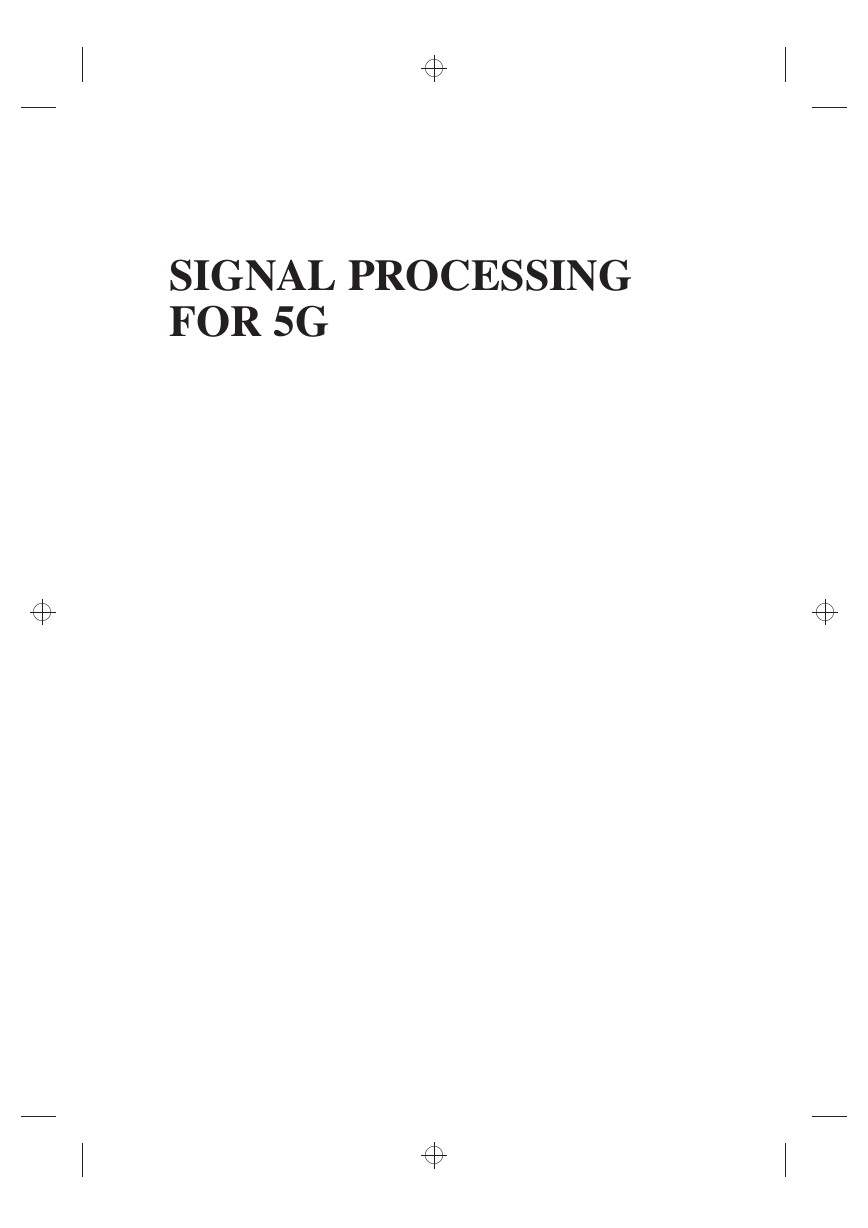
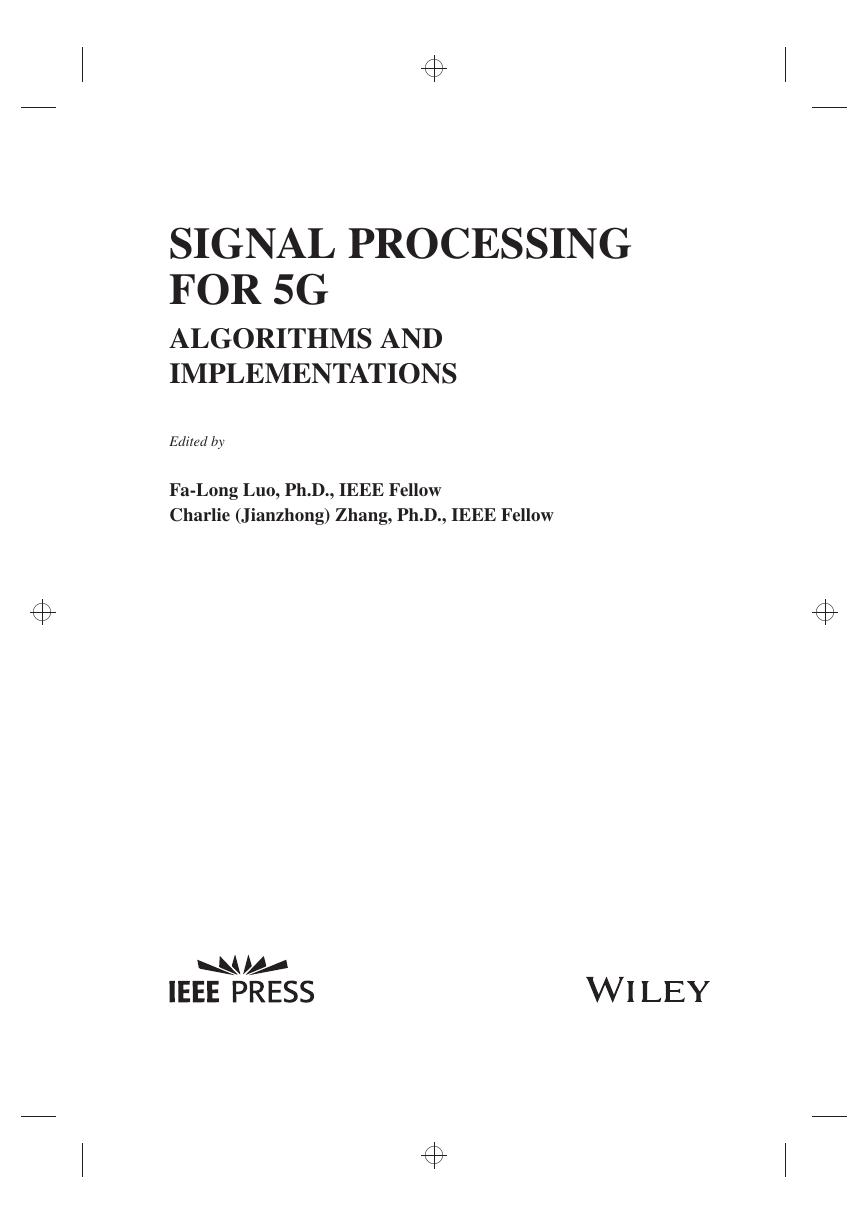
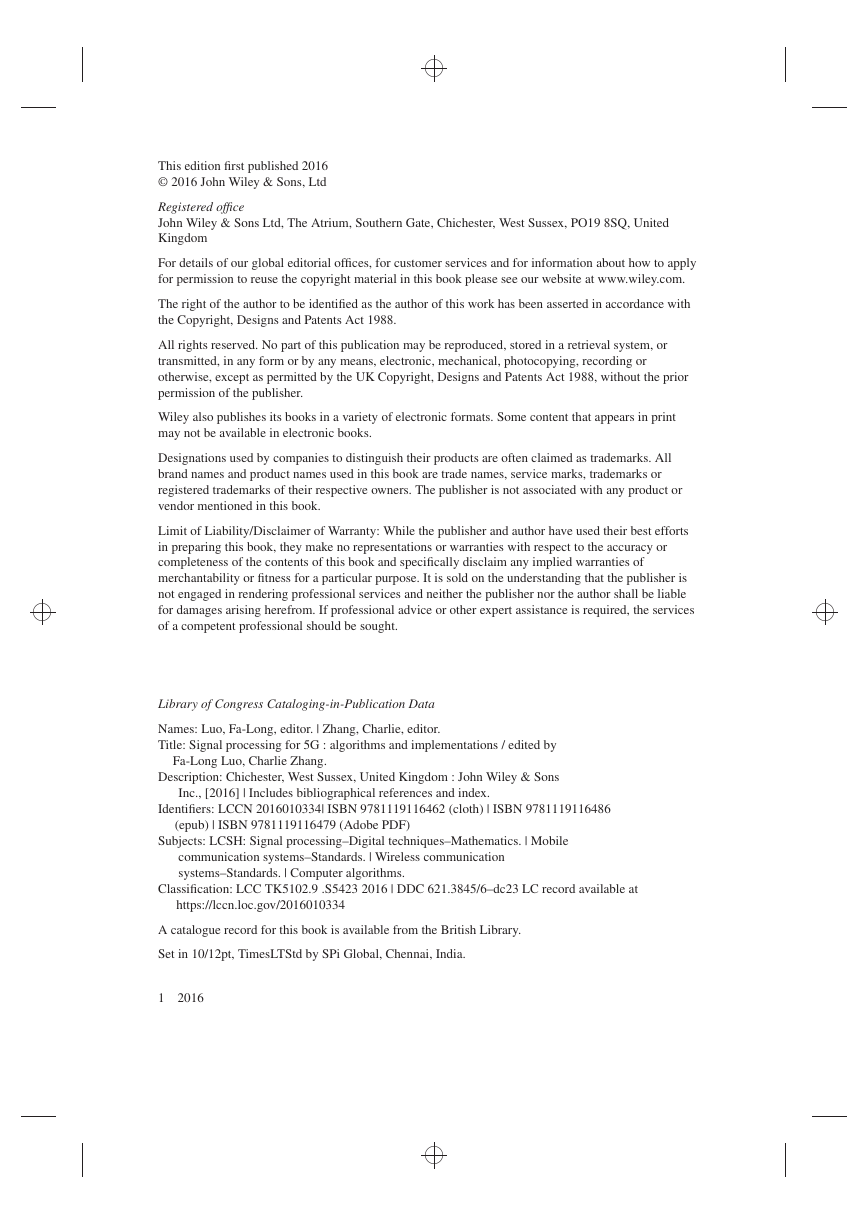
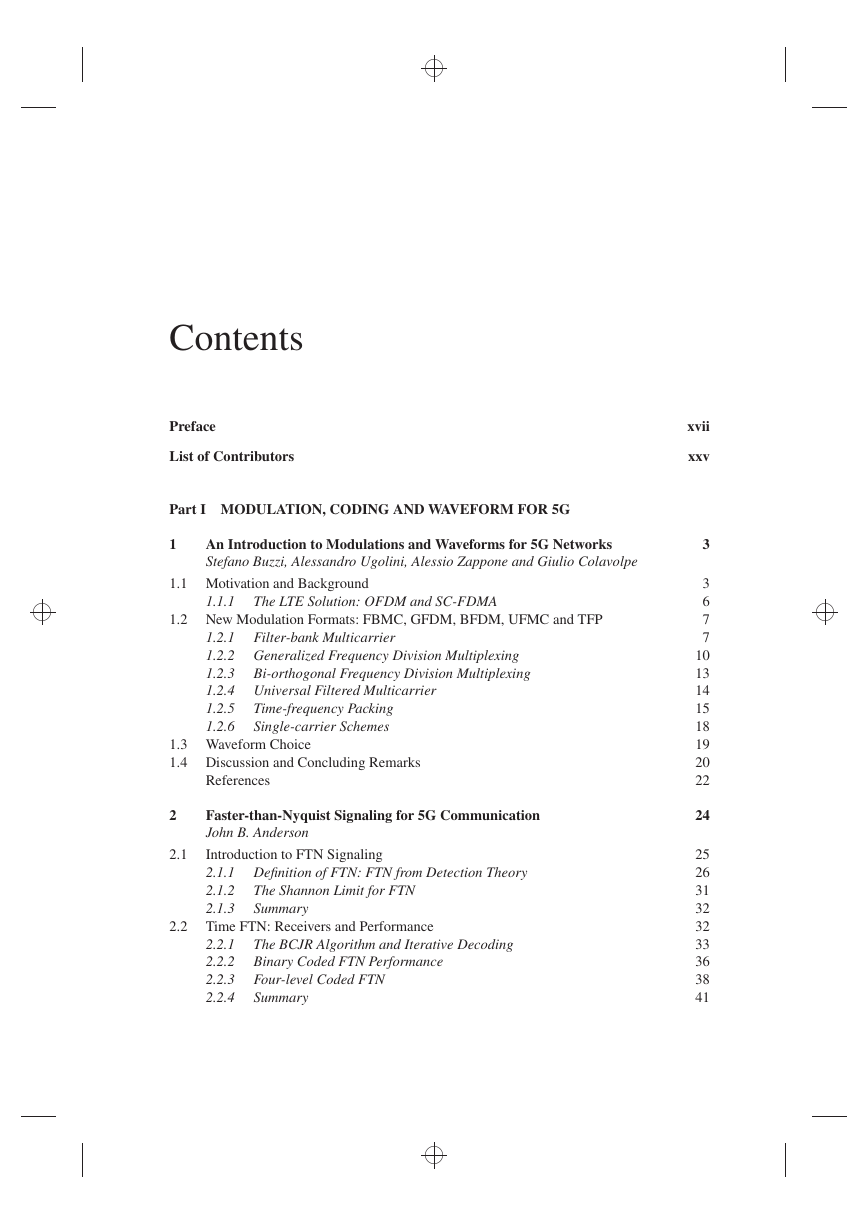
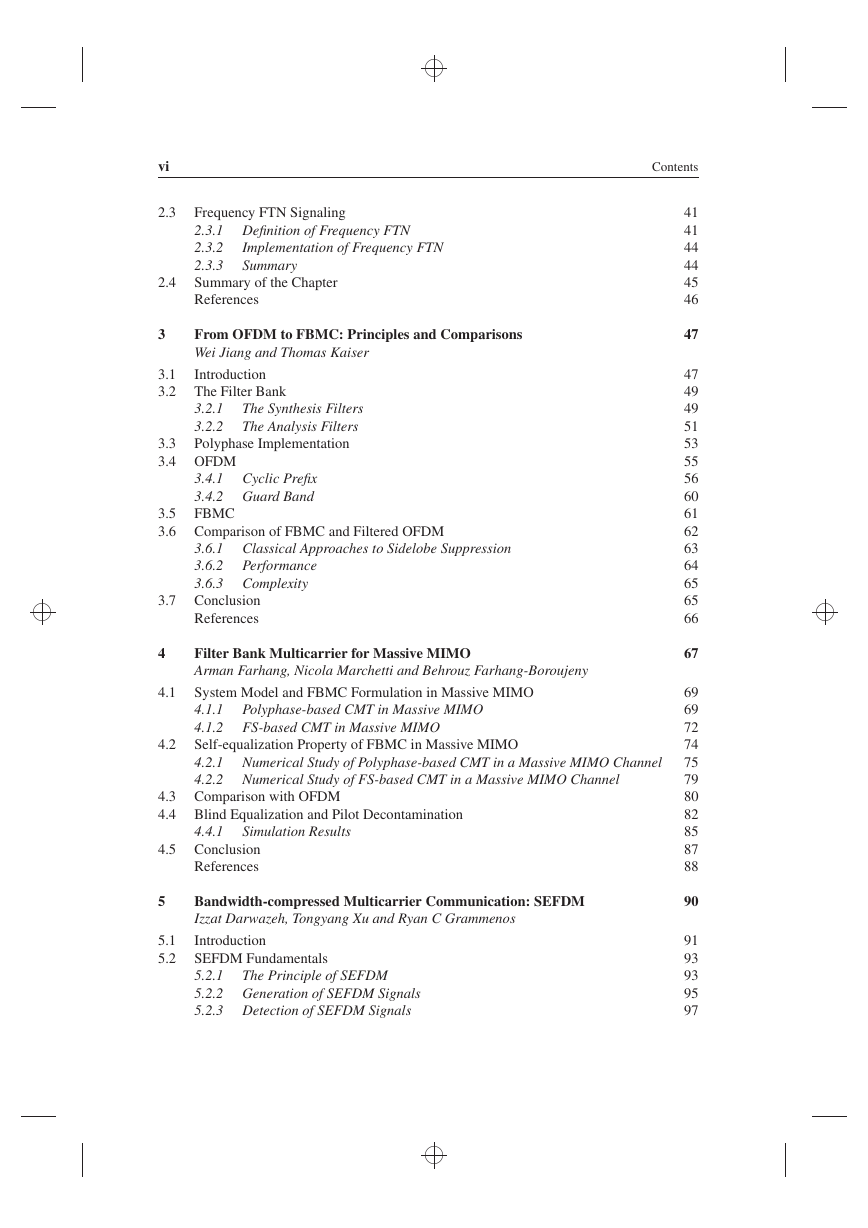
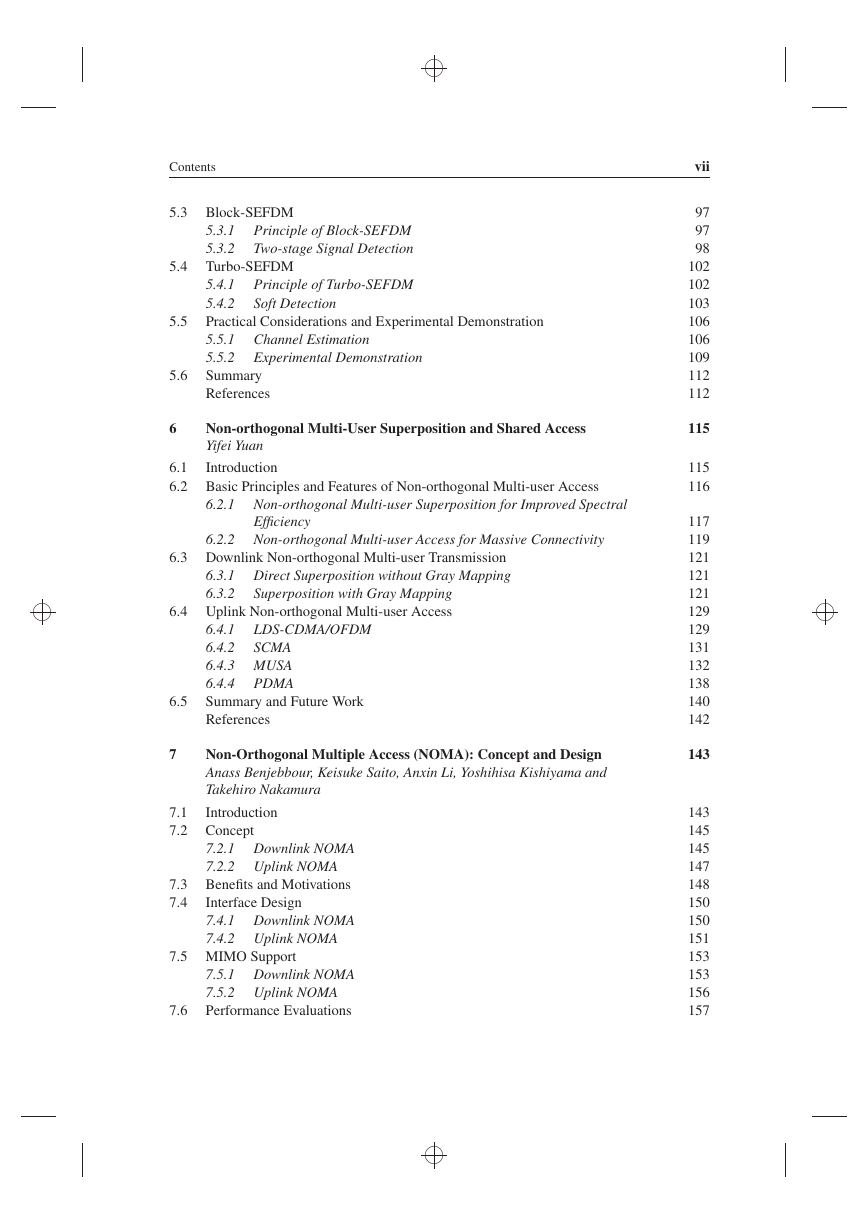
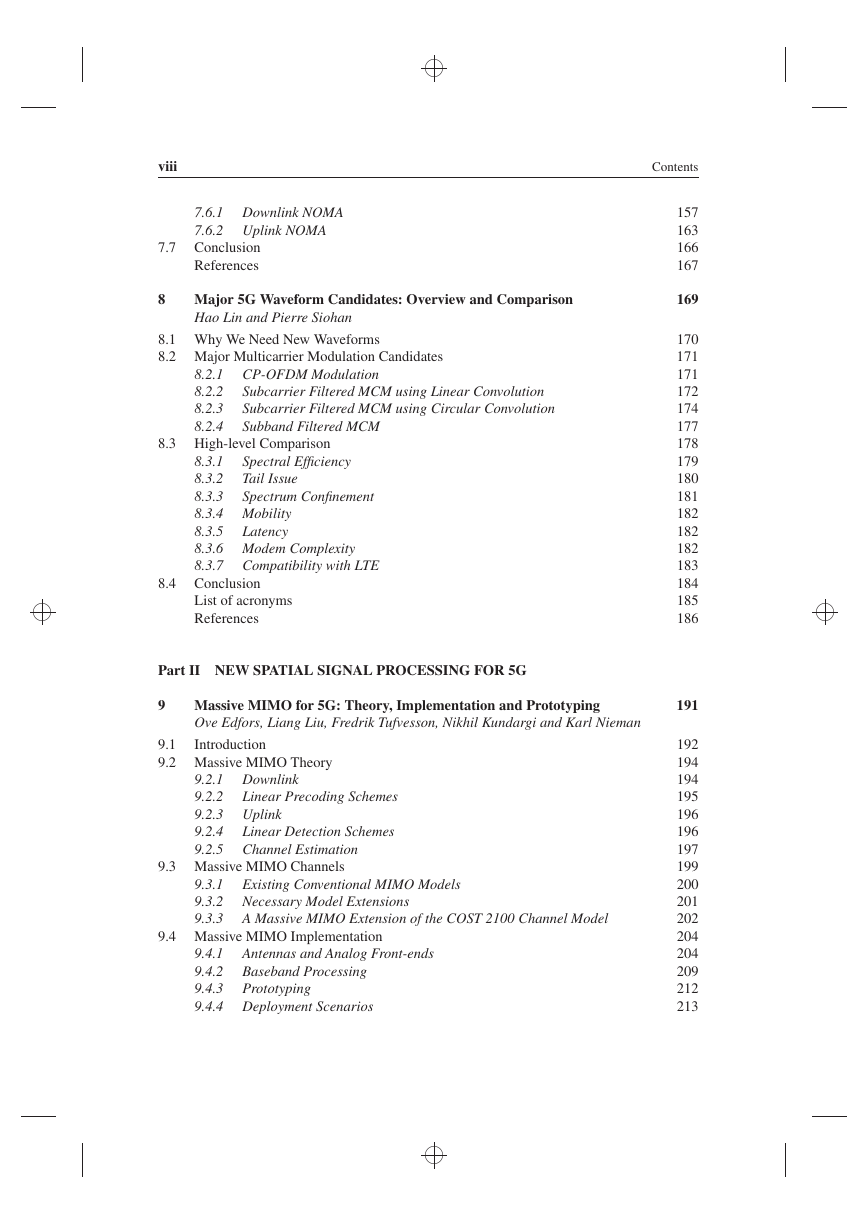
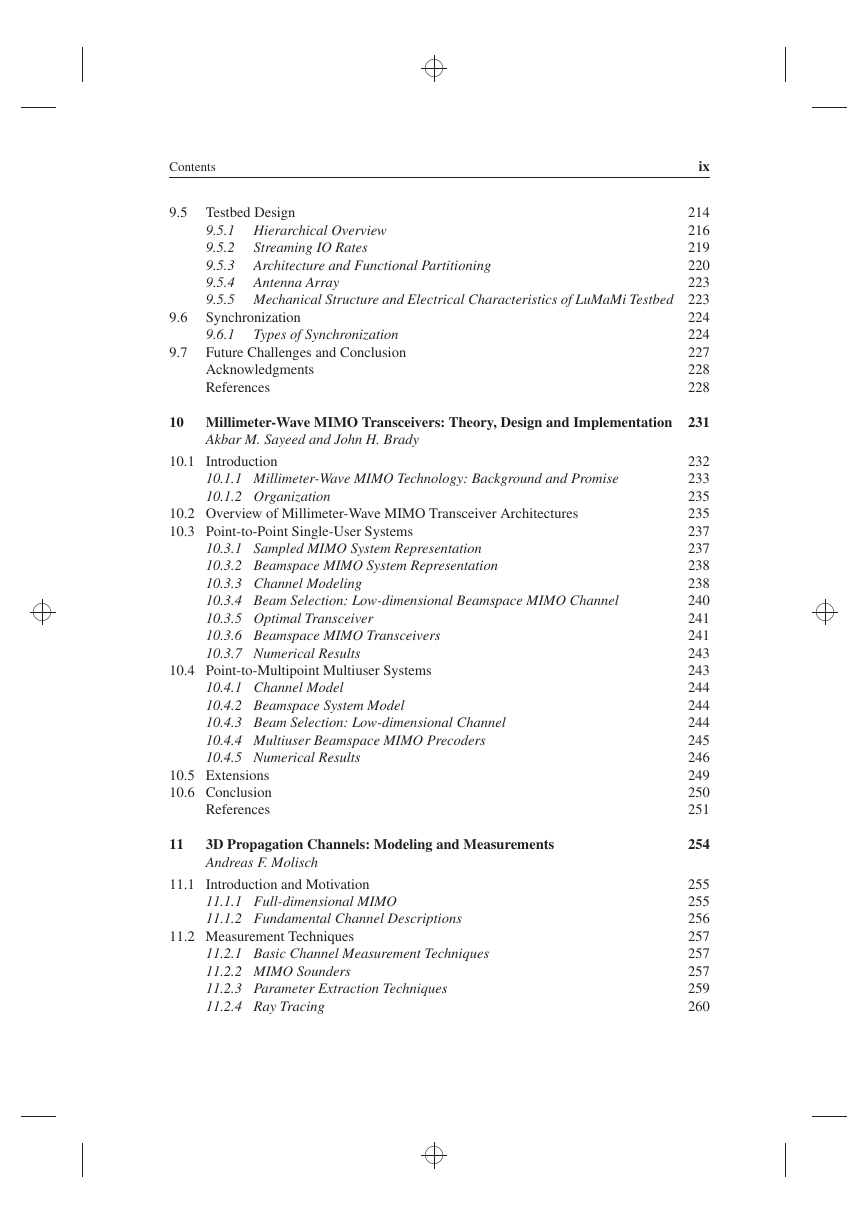








 2023年江西萍乡中考道德与法治真题及答案.doc
2023年江西萍乡中考道德与法治真题及答案.doc 2012年重庆南川中考生物真题及答案.doc
2012年重庆南川中考生物真题及答案.doc 2013年江西师范大学地理学综合及文艺理论基础考研真题.doc
2013年江西师范大学地理学综合及文艺理论基础考研真题.doc 2020年四川甘孜小升初语文真题及答案I卷.doc
2020年四川甘孜小升初语文真题及答案I卷.doc 2020年注册岩土工程师专业基础考试真题及答案.doc
2020年注册岩土工程师专业基础考试真题及答案.doc 2023-2024学年福建省厦门市九年级上学期数学月考试题及答案.doc
2023-2024学年福建省厦门市九年级上学期数学月考试题及答案.doc 2021-2022学年辽宁省沈阳市大东区九年级上学期语文期末试题及答案.doc
2021-2022学年辽宁省沈阳市大东区九年级上学期语文期末试题及答案.doc 2022-2023学年北京东城区初三第一学期物理期末试卷及答案.doc
2022-2023学年北京东城区初三第一学期物理期末试卷及答案.doc 2018上半年江西教师资格初中地理学科知识与教学能力真题及答案.doc
2018上半年江西教师资格初中地理学科知识与教学能力真题及答案.doc 2012年河北国家公务员申论考试真题及答案-省级.doc
2012年河北国家公务员申论考试真题及答案-省级.doc 2020-2021学年江苏省扬州市江都区邵樊片九年级上学期数学第一次质量检测试题及答案.doc
2020-2021学年江苏省扬州市江都区邵樊片九年级上学期数学第一次质量检测试题及答案.doc 2022下半年黑龙江教师资格证中学综合素质真题及答案.doc
2022下半年黑龙江教师资格证中学综合素质真题及答案.doc